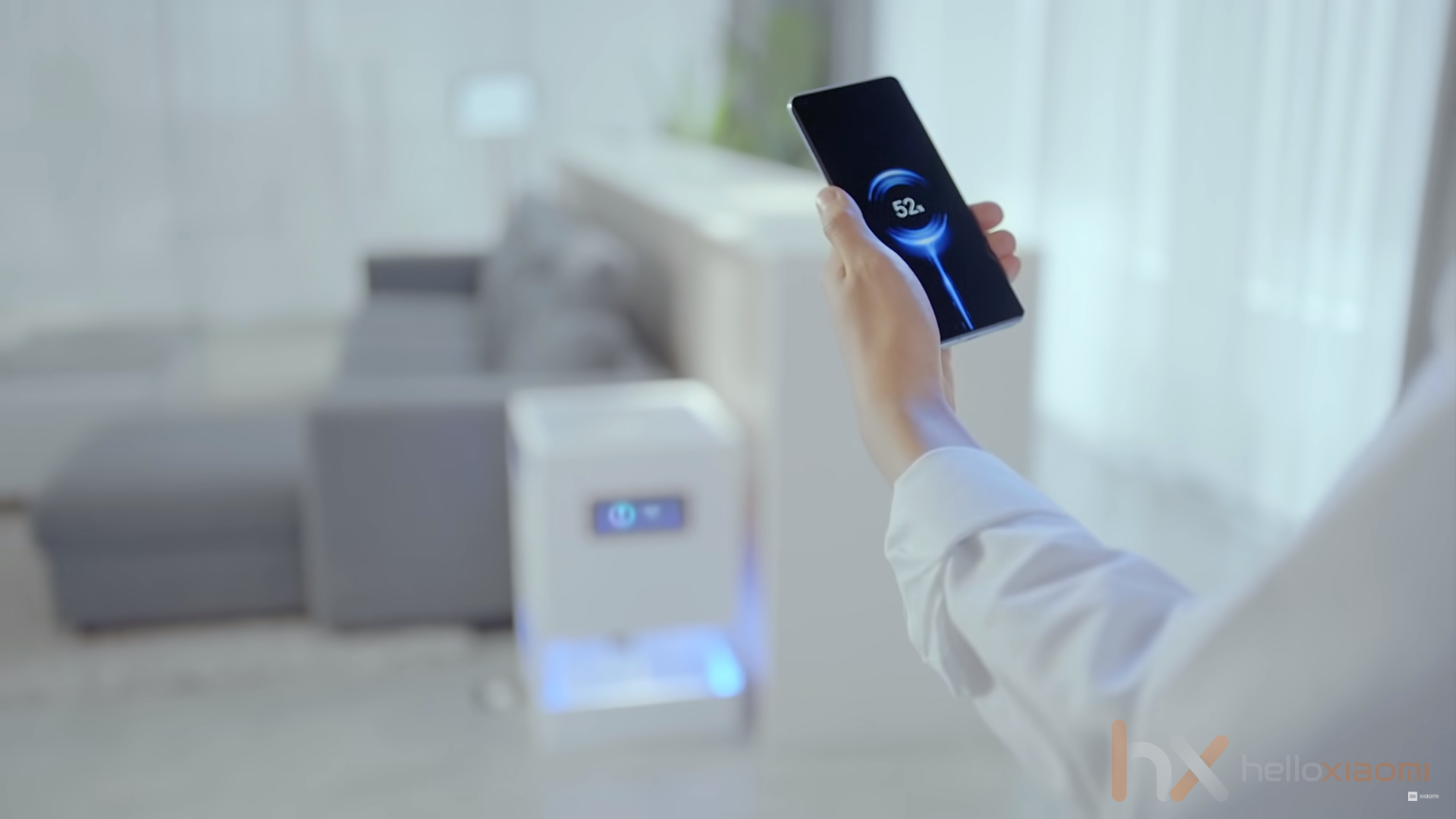Az eddigi klasszikus értelemben vett vezeték nélküli töltők olyannyira nem lettek slágerek, mert hasznosnak hasznosak, de a legtöbb ember nem fog csak azért venni egy vezeték nélküli töltőt, hogy ne kelljen bedugni a kábelt, hisz’ tulajdonképp’ ugyanúgy egy mozdulat. Jó tudom, ez eléggé demagóg hozzáállás, mert egy íroasztalon fix helyen lévő vezeték nélküli töltő tényleg praktikus tud lenni és még jól is nézhet ki, de valljuk be, ha valaki azt mondja, hogy vezeték nélküli, akkor az ember arra gondol, hogy vezeték nélküli, érintés nélküli, mint a Wi-Fi vagy a TWS fülesek.
That's pretty cool:
No, but, Xiaomi thought they were serious about the meaning of the word and developed a truly wireless charger, this Mi Air Charge.
We’re excited to bring you the remote charging technology – Mi Air Charge Technology! Charge multiple devices simultaneously while you’re gaming, walking around or even when something’s in the way, no strings attached. Another giant leap forward in wireless charging technology! pic.twitter.com/wEoB10wOQ2
- Xiaomi (@Xiaomi) January 29, 2021
Xiaomi's proprietary isolated charging case has five phased interference antennas that accurately detect the location of the smartphone. The phase-control array of 144 antennas transmits millimetre-wide waves directly to the phone via radiation. So this technology has nothing to do with the Qi standard, it works in a completely different way. The receiving phone must be equipped with a miniaturised antenna system with a built-in transmitting antenna and receiving antenna array. It must have a total of 14 antennas to convert the millimetre wave signal emitted by the charging box. The signal is converted into electrical energy by the device via a rectifier circuit and the phone charges wirelessly.
A hatótáv “több méter”, nem lett pontosan meghatározva. A Xiaomi állítása szerint a fizikai tárgyak nem csökkentik a töltés hatékonyságát, tehát az sem baj, ha mondjuk egy szekrény a töltés útjába állna.
Xiaomi plans to make the Mi Air Charge compatible not only with phones, but also with smartwatches and smart bracelets, but it has come up with an even better idea. It wants to build it into various home devices, lamps, speakers, which would be really really impersive.
This really is the future. It would virtually do away with chargers in the classical sense, because they would not be needed. You come home and while you're at home, your phone, watch, earphones charge. So there you go, that's innovation. It's certainly not going to come out anytime soon and, well, it's new technology and it's going to cost money to develop, so if it does debut, it's certainly going to do it at a high price.
This technology should be seen as existing, it is possible that in 10-20 years the charging socket will be a thing of the past.





















![[151] HyperOS heti hibajelentés](https://helloxiaomi.hu/wp-content/uploads/2024/04/hyperosbugreportindex-218x150.webp)



